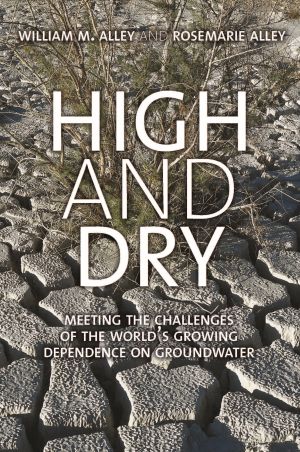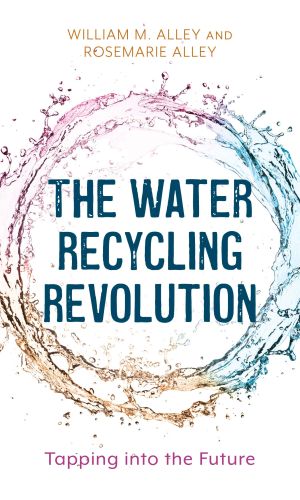Listen here on Spotify | Listen here on Apple Podcast
Episode recorded June 9, 2023
Episode released on August 10, 2023
 Bill Alley has been the Director of Science and Technology at the National Ground Water Association since 2012 and prior to this position he worked at the US Geological Survey serving as Chief of the Office of Groundwater for almost two decades.
Bill Alley has been the Director of Science and Technology at the National Ground Water Association since 2012 and prior to this position he worked at the US Geological Survey serving as Chief of the Office of Groundwater for almost two decades.
Highlights | Transcript
- Bill and Rosemarie Alley have written many books related to water but the focus of this podcast in on their book High and Dry: Meeting the Challenges of the World’s Growing Dependence on Groundwater.
- The Colorado River Basin has been in drought since 2000 with naturalized flows reduced by ~ 20%.
- The Colorado River Compact was passed in 1922 during a wetter than normal period providing 7.5 million acre feet (maf, ~9 km3)/yr each to the Upper and Lower Colorado River basins.
- Compact allocations in the Lower Colorado River Basin include 4.4 maf to California, 2.8 maf to Arizona, and 0.3 maf to Nevada.
- Arizona was required by Congress to develop a groundwater governance system to access its allocation of Colorado River water.
- Arizona passed the Groundwater Management Act in 1980 which includes five Active Management Areas (Prescott, Phoenix, Pinal, Santa Cruz, and Tucson) and includes Irrigation Non-expansion Areas (INAs). Among the requirements for Active Management Areas (AMAs), the act requires new developments to have a 100 yr “assured water supply.”
- The Central Arizona Project (CAP) consists of 336 miles of canal/pipeline that was constructed over 20 years (1973 – 1993) and transfers 1.5 maf from the Colorado River to the AMAs.
- CAP deliveries are used for irrigation to replace groundwater-fed irrigation (in lieu recharge) and are recharged directly (managed aquifer recharge) using spreading basins in the AMAs.
- The long-term drought since 2000 has resulted in declining storage in lakes Powell and Mead. Lake Powell is currently at ~40% of full pool (3584 ft elevation, Jun 26, 2023) and Lake Mead at 31% of capacity (1056 ft elevation).
- The geology of the Basin and Range system in South central Arizona is very suitable for managed aquifer recharge and there is plenty of storage capacity from previous groundwater depletion.
- Some parts of Arizona do not have access to surface water and groundwater levels have continued to decline in those areas (Scanlon et al., 2016). However, the Douglas Basin in southeast Arizona is now becoming an Active Management Area (the 6th).
- Water allocations from the Colorado River have been reduced by 3 maf over the next three years (2024 – 2026) with compensation of $1.2 billion from the Federal Government.
- There is a big difference between available vs recoverable groundwater. For example, only 1 -2% of groundwater development in the San Pedro River Basin (AZ) has impacted surface water and the Nature Conservancy has developed programs with stakeholder input for mapping wet and dry river zones and groundwater models to improve sustainable management.
- California passed the Sustainable Groundwater Management Act (SGMA) in 2014 in the middle of an intense drought. A total of 94 of the state’s 515 groundwater basins have been designated as medium or high priority basins requiring a groundwater sustainability plan to be developed by local Groundwater Sustainability Agencies.
- SGMA requires basins to be managed sustainably by 2040.
- Conjunctive water management is very important in California with surface water transported from the humid north to the semiarid south (Central Valley and cities) by vast pipelines (Central Valley Project, State Water Project).
- Water use in the Central Valley ranges from ~70% surface water use during wet years to 70% groundwater use during droughts.
- Flood MAR includes flooding of agricultural fields in winter to recharge underlying depleted aquifers.
- California is continually expanding wastewater reuse as described in The Water Recycling Revolution. The fully advanced treatment or FAT includes microfiltration, followed by reverse osmosis, and UV and advanced oxidation processes.
- Seawater and brackish groundwater desalination is also an important new water source in California. The Carlsbad desalination plant in San Diego is the largest in the US with a capacity of 50 million gallons/day.
- Wastewater reuse is more cost efficient than seawater desalination.





